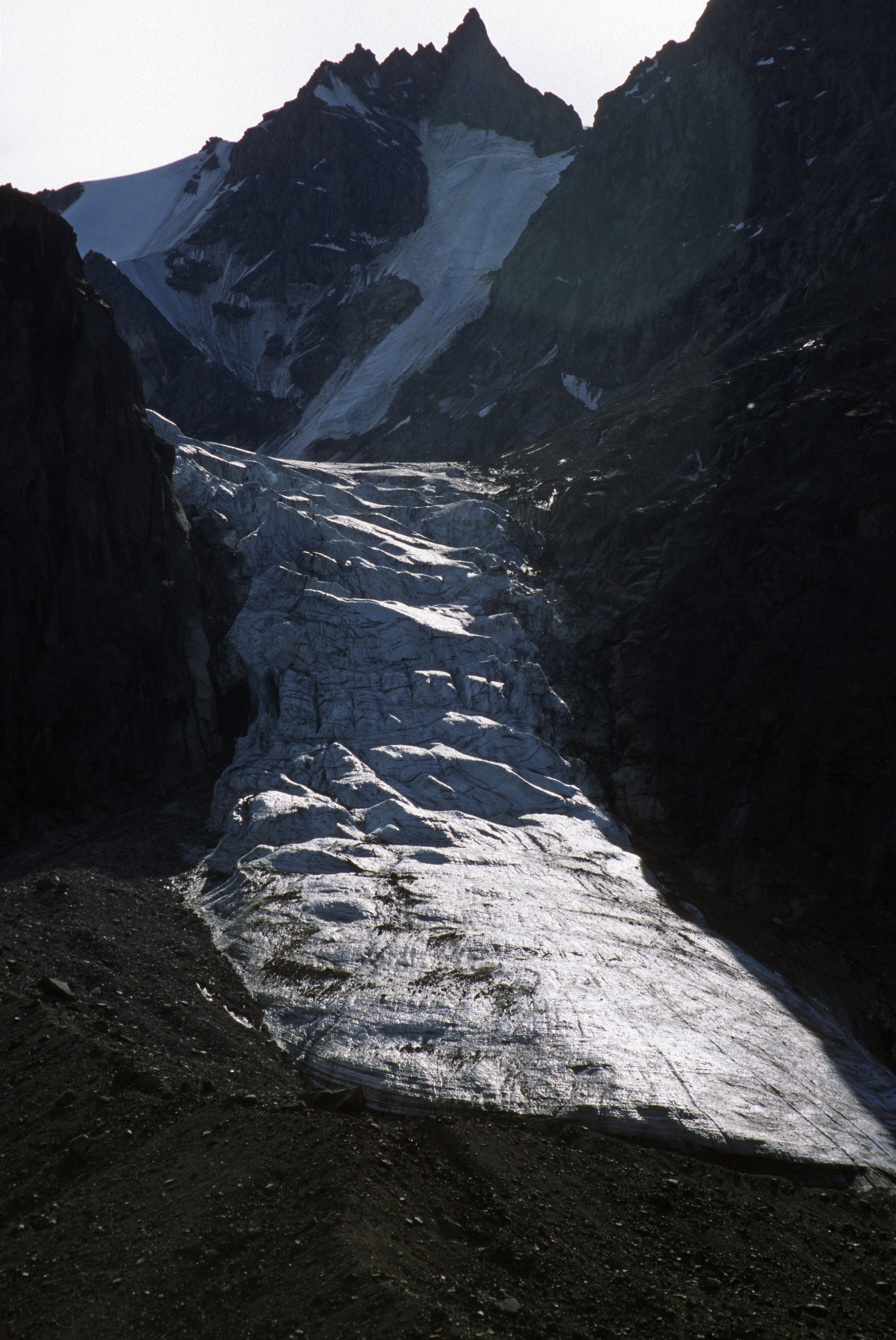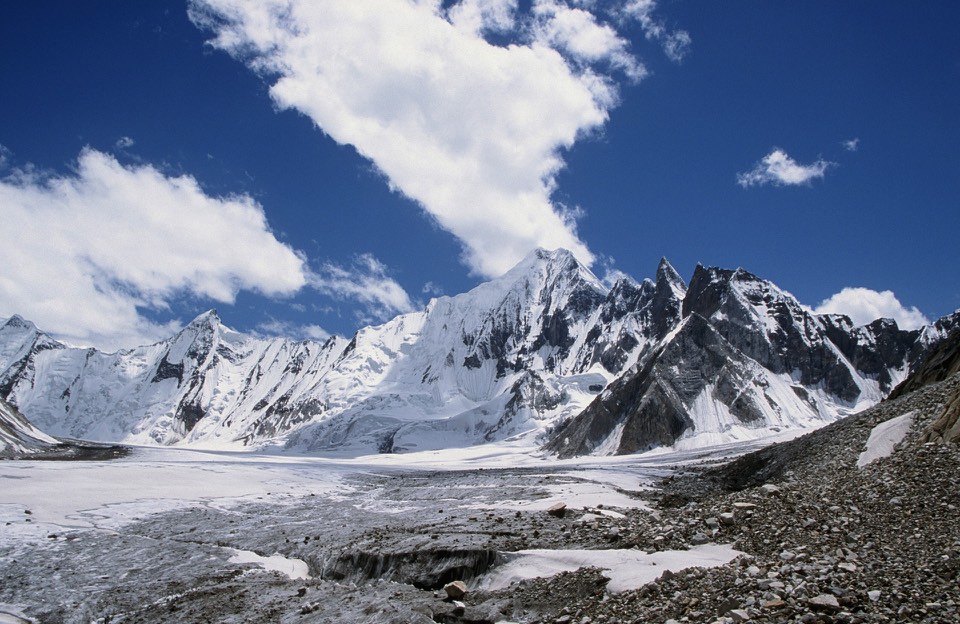Participants: Derek, Mike, Joe (Mike’s 16 y.o. son), Sue, Ron and Chris (Ron’s son)
June 21-23, 2001
This trek was my first trek to the high mountains of Asia and the beginning of many trekking adventures to follow. I found a website with spectacular photos from this trek. The website was created by a French gentleman who travelled to the Karakoram in the year 2000. I communicated with him and he provided me with the contact to Ghulam and his agency Mountains Travel Pakistan (MTP). I took this trip seriously and started training in December of 2000. I found five other persons to join me. It was the largest group ever assembled by me! The story below is based on the journal by Susan, one of the participants of this magnificent trek.
Finally the day of departure came. Our Air Canada flight from Calgary was delayed by 8 hours. This made us miss the flight from London to Abu Dhabi. Thankfully we were rerouted on the exotic Royal Air Brunei. We landed in Abu Dhabi on Royal Air Brunei a few hours later. The bags also arrived with us, which was a small miracle.
Prior to embarking on our trek, we needed the permits and the briefing at the Ministry of Tourism in Islamabad. In Pakistan, the Ministry of Tourism is the agency responsible for issuing trekking and climbing permits. To my surprise, the permit appointed me the leader, which Susan took quite literarily. The office at the Ministry of Tourism was a throwback to the British era. The office was located in a small building and had mountains of folders and papers everywhere. It was also a special place of sorts as all climbers, some very famous, had to show up in person for the briefing. The obligatory visit to the Ministry was a Pakistani tradition among the climbers and trekkers. On the walls of the small and crowded waiting area, there were some old posters from 1980s with famous climbers and pictures of mountains we would soon visit. The official issuing the permit was quite inquisitive about the Canadian “Eskimos” and really wanted to know if we have ever seen them and what they were like. Those were the only questions he had asked us. After a friendly chat and banter, the permits were issued and we were on our way.
After the meeting at the Ministry, we went without the guide to a lovely viewpoint above Islamabad. It was hot and humid. Then we went to Faisal Mosque. The dark sky, due to approaching thunderstorm, contrasted beautifully with the white marble of the mosque. We could not go inside but walked around the massive courtyard. It is probably the most modern and attractive building in Islamabad.
Islamabad is the old city while Rawalpindi is the new section. Rawalpindi is where all the foreign embassies are located. It has wide and tree-lined streets and is surrounded by green hills. It is actually a very nice city. Rawalpindi on the other hand, is old and chaotic. It does have a different charm and, all in all, is very exotic. Everyone was extremely nice and friendly. Pakistan made a good first impression on us.
We had tea at the MTP’s office located in a residential high rise and then went to the local bazaar. The bazaar is a maze of very narrow and claustrophobic alleys. It is dividend into areas of specialty so one does not have to wander for hours looking for an item of interest. Again, everyone was all smiles and very friendly. We saw some dead rats size of a house cat! We did not see any other foreigners and were quite an attraction for the locals. So may sights, sounds and smells. It was all absolutely fantastic.
Sunday, June 24th, 2001
We were up by 5.40am for our drive to Skardu, the capital of Baltistan. Baltistan is the province in northern Pakistan where most of the high mountains are located and where our trek was. It is also an area of dispute between India and Pakistan and a reason for the military standoff.
We had two days of spectacular driving along the KKH ahead of us. The intent was to fly but we were unanimous that we wanted to drive. We passed many crowded villages with many people milling around. At first, we were driving through lowlands and it was hot and humid. As we drove north, the scenery got more and more spectacular. As we continued up the highway, the Indus River gorge became deeper and deeper and the surrounding mountains became quite steep and dry. The highway is very spectacular and the fact that it was built left us in awe. The KKH was built by the Chinese in the 1960 and 1970. Close to a thousand people were killed in the process. The drops to the Indus River were immense. Everything is bigger here and we had no concept of scale. In all villages there were no women to be seen. Men were running the shops and the women were probably in the fields and homes.
























































































































































































































































































































































































